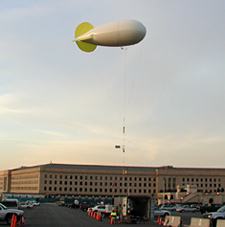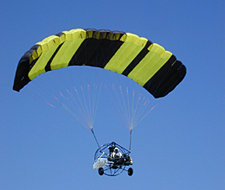 |

|
| Home | Systems | Research | Publications | People | Contact |
| RESEARCH GROUPS @ CIRES > |
Balsley HomeSystems
Turbulence Sensor Contacts |
CIRES TLS and PPCThe development of the CIRES Tethered Lifting System started back in the late 1980’s and emerged from the need of providing new ways of acquiring high-resolution insitu measurements of a variety of atmospheric quantities for atmospheric studies. The CIRES TLS consists of a lifting platform, a parafoil kite for strong wind conditions (windspeeds >12 m s-1) or an aerodynamic blimp for weaker wind regimes, that can loft various meteorological instruments attached in series below the lifting platform. Instruments typically flown with the TLS consist of, but are not limited to, the CIRES turbulence packages (provide high-resolution measurements of temperature, velocity, and turbulence, as well as pressure and wind direction), sonic anemometers, as well as more common meteorological platforms (pressure, relative humidity, etc…).
Besides its payload weight-limitations and a few other minor drawbacks (e.g. air-traffic clearance is needed, challenging to fly in severe weather conditions,…), the TLS provides a unique way of collecting insitu measurements of temperature at heights surpassing the reach of meteorological towers, and also provide unprecedented high-resolution turbulence measurements (temperature structure constant CT2, energy dissipation rate ε, velocity/temperature spectra and structure functions with length-scales spanning from as little as the kolmogorov mircoscale up to the external length scales) from the ground up to a few kilometers high.
|

